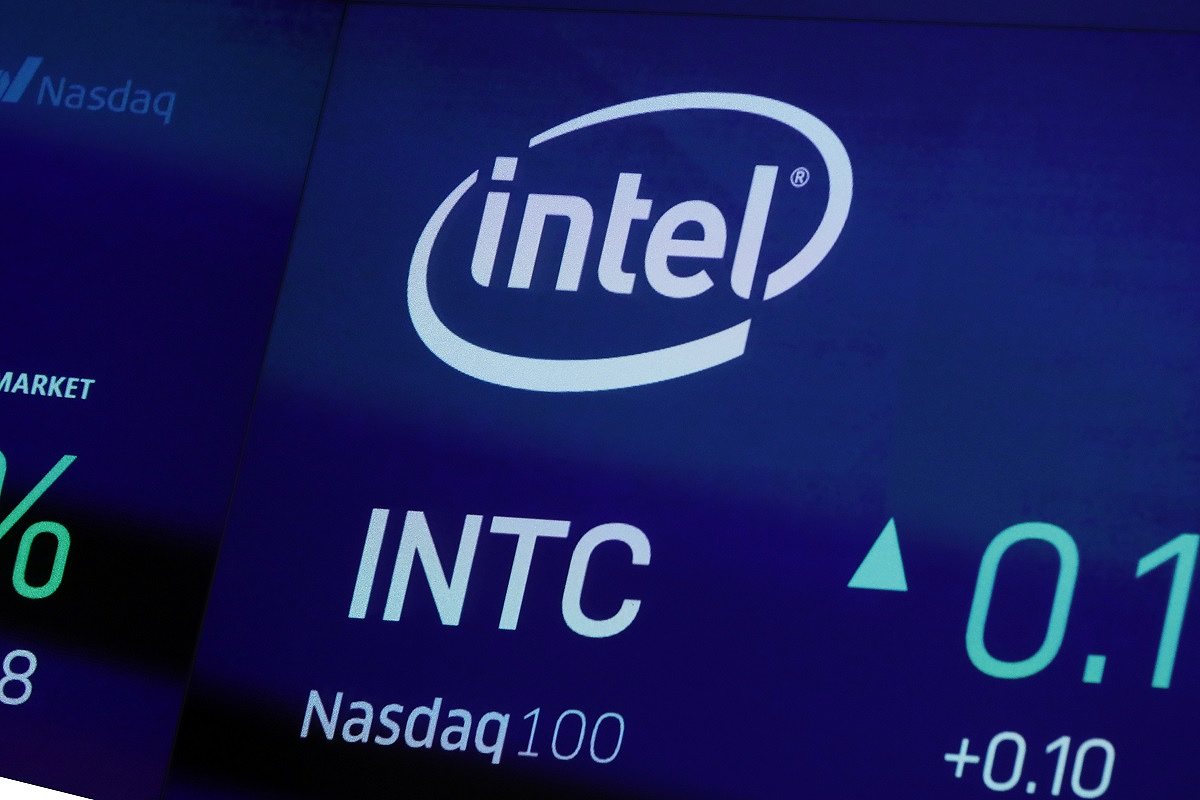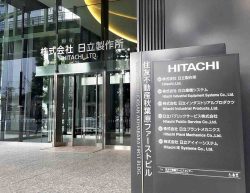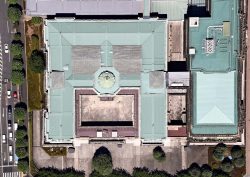Chipmaker Intel to Cut 15,000 Jobs as Tries to Revive Its Business and Compete with Rivals

The symbol for Intel appears on a screen at the Nasdaq MarketSite, on Oct. 1, 2019 in New York. Intel Corp. Intel reports earnings on Thursday, Aug. 1, 2024.
11:45 JST, August 2, 2024
Chipmaker Intel says it is cutting 15% of its huge workforce — about 15,000 jobs — as it tries to turn its business around to compete with more successful rivals like Nvidia and AMD.
In a memo to staff, Intel Corp. CEO Pat Gelsinger said Thursday the company plans to save $10 billion in 2025.
“Simply put, we must align our cost structure with our new operating model and fundamentally change the way we operate,” he wrote in the memo published on Intel’s website. “Our revenues have not grown as expected — and we’ve yet to fully benefit from powerful trends, like AI. Our costs are too high, our margins are too low.”
The job cuts come in the heels of a disappointing quarter and forecast for the iconic chip maker founded in 1968 at the start of the PC revolution.
Next week, Gelsinger wrote, Intel will announce an “enhanced retirement offering” for eligible employees and offer an application program for voluntary departures.
“These decisions have challenged me to my core, and this is the hardest thing I’ve done in my career,” he said. The bulk of the layoffs are expected to be completed this year.
The Santa Clara, California-based company is also suspending its stock dividend as part of a broader plan to cut costs.
Intel reported a loss for its second quarter along with a small revenue decline, and it forecast third-quarter revenues below Wall Street’s expectations.
Its stock plunged 19% in after-hours trading, indicating that Intel could lose roughly $24 billion of its market value when the stock market opens Friday.
The company posted a loss of $1.6 billion, or 38 cents per share, in the April-June period. That’s down from a profit of $1.5 billion, or 35 cents per share, a year earlier. Adjusted earnings excluding special items were 2 cents per share.
Revenue slid 1% to $12.8 billion from $12.9 billion.
Analysts, on average, were expecting earnings of 10 cents per share on revenue of $12.9 billion, according to a poll by FactSet.
“Intel’s announcement of a significant cost-cutting plan including layoffs may bolster its near-term financials, but this move alone is insufficient to redefine its position in the evolving chip market,” said eMarketer analyst Jacob Bourne. “The company faces a critical juncture as it leverages U.S. investment in domestic manufacturing and the surging global demand for AI chips to establish itself in chip fabrication.”
Gelsinger noted in a conference call with analysts that Intel has previously said that its investments in the AI PC market would pressure its profit margins over the short term but should benefit the company in the long term.
“We believe the trade-offs are worth it. The AI PC will grow from less than 10% of the market today to greater than 50% in 2026,” he said.
Unlike its rivals like Nvidia, Intel manufactures chips in addition to designing them. It has been working to build up its foundry business making semiconductors in the U.S., competing with rivals such as market leader Taiwan Semiconductor Manufacturing Co. or TSMC.
Helped by Gelsinger’s lobbying efforts since he took the company’s helm in 2021, Intel has been a major beneficiary of the 2022 CHIPS and Science Act. The Biden administration helped shepherd that through Congress amid concerns after the pandemic that the loss of access to chips made in Asia could plunge the U.S. economy into recession.
In March, President Joe Biden celebrated an agreement to provide Intel with up to $8.5 billion in direct funding and $11 billion in loans for computer chip plants around the country, talking up the investment in the political battleground state of Arizona and calling it a way of “bringing the future back to America.” At the time, Gelsinger called the CHIPS Act “the most critical industrial policy legislation since World War II.”
In September 2022, Biden praised Intel as a job creator with its plans to open a new plant near Columbus, Ohio. The president praised the company for plans to “build a workforce of the future” for the $20 billion project, which he said would generate 7,000 construction jobs and 3,000 full-time jobs set to pay an average of $135,000 a year.
“The U.S. government wants to reinvigorate domestic manufacturing, especially this is the area of advanced computer chips,” Bourne said. “And Intel has been kind of earmarked for this money. But there’s a lot of infrastructure that goes into this, there’s the building of these facilities, which are really highly specialized — and then you also need to upskill the local workforce where these plants are located. And so it takes time. This is not something that happens overnight.”
"News Services" POPULAR ARTICLE
-

American Playwright Jeremy O. Harris Arrested in Japan on Alleged Drug Smuggling
-

Japan’s Nikkei Stock Average as JGB Yields, Yen Rise on Rate-Hike Bets
-

Japan’s Nikkei Stock Average Licks Wounds after Selloff Sparked by BOJ Hike Bets (UPDATE 1)
-

Japanese Bond Yields Zoom, Stocks Slide as Rate Hike Looms
-

Japan’s Nikkei Stock Average Buoyed by Stable Yen; SoftBank’s Slide Caps Gains (UPDATE 1)
JN ACCESS RANKING
-

Keidanren Chairman Yoshinobu Tsutsui Visits Kashiwazaki-Kariwa Nuclear Power Plant; Inspects New Emergency Safety System
-

Imports of Rare Earths from China Facing Delays, May Be Caused by Deterioration of Japan-China Relations
-

University of Tokyo Professor Discusses Japanese Economic Security in Interview Ahead of Forum
-

Japan Pulls out of Vietnam Nuclear Project, Complicating Hanoi’s Power Plans
-

Govt Aims to Expand NISA Program Lineup, Abolish Age Restriction

























